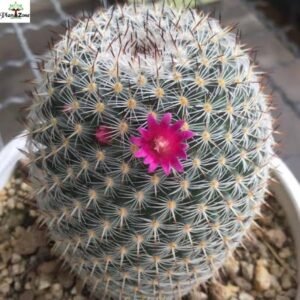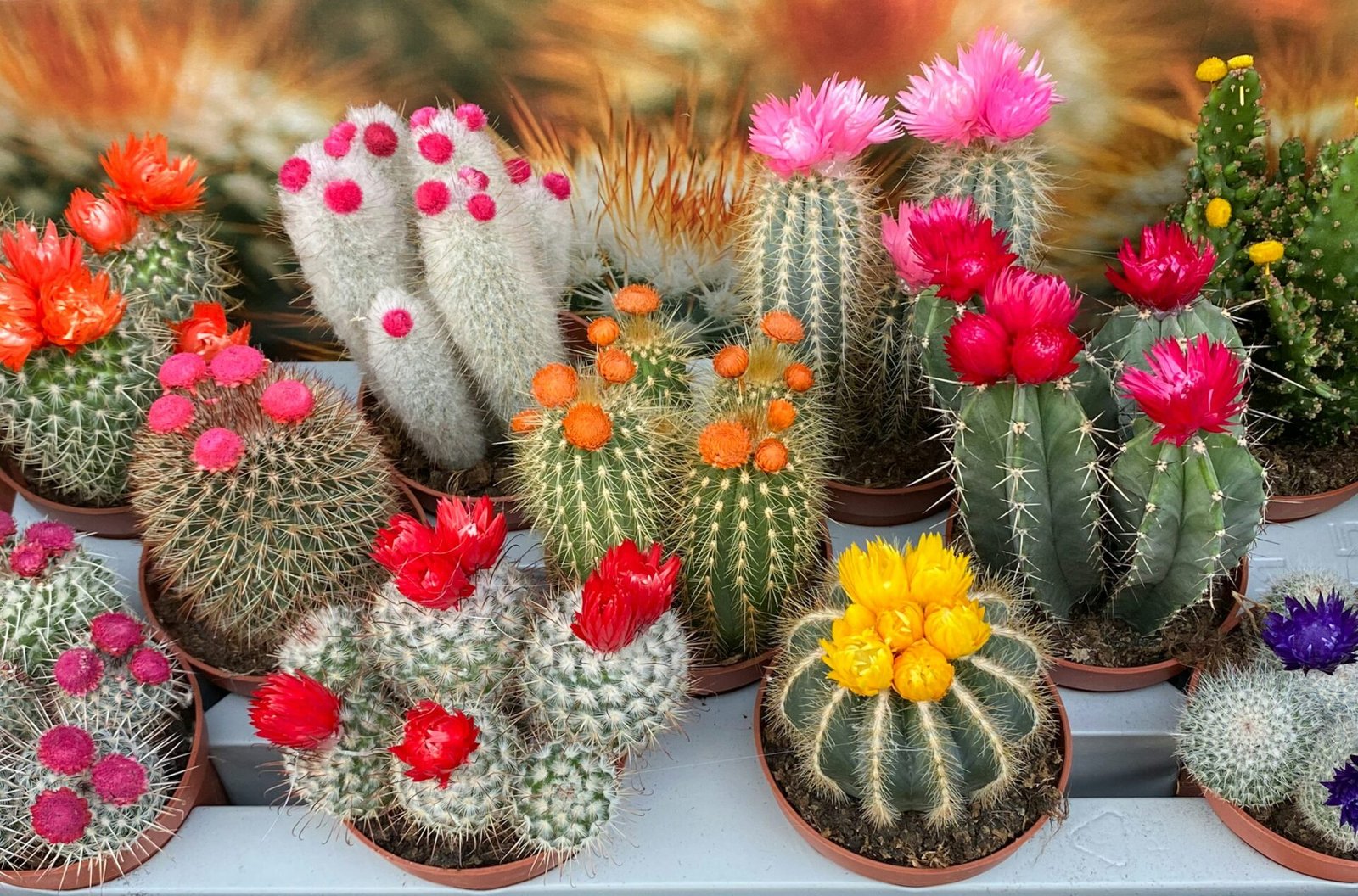
Flowering cactus plants transform your home into delightful displays of color. These resilient plants captivate enthusiasts with their stunning blooms. Small flowering cactus plants, such as Mammillaria, charm with compact forms and vibrant flowers. Large flowering cactus plants, like Hamatocactus, impress with their bold, fragrant blossoms. Both types blossom in bright light and well-draining soil. They require minimal maintenance, making them perfect for any garden.
This article explores the beauty and variety of small and large flowering cactus plants. Discover how these desert plants bring joy and elegance to homes and gardens worldwide.
Small Flowering Cactus Plants
Mammillaria species are popular among flowering cactus plants enthusiasts. They are admired for their small size and beautiful flowers. Native to Mexico, these cacti include varieties like Mammillaria albilanata with dark pink flowers, Mammillaria bocasana known for its soft, woolly appearance, and Mammillaria bombycina with fluffy white spines.
Other notable species are Mammillaria elongata, the “Ladyfinger Cactus,” and Mammillaria eriacantha, the “Old Lady Cactus.” They thrive in warm climates, require minimal maintenance, and produce vibrant flowers in various colors.
These cacti prefer bright light, well-draining soil, and careful watering, making them ideal for both indoor and outdoor cultivation. Find the list below and read about each small flowering cactus from the Mammillaria family:
Mammillaria Albilanata
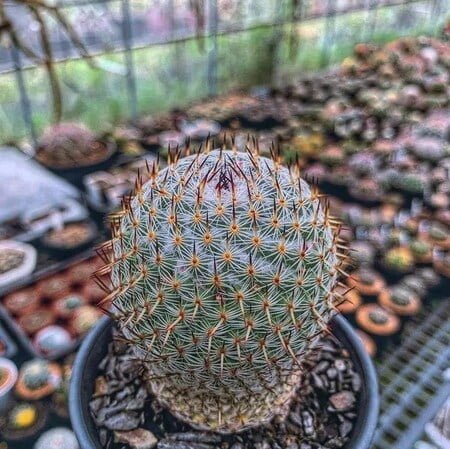
Mammillaria albilanata, native to Mexico, features dense, woolly spines. It produces dark pink flowers in summer, thriving in warm climates. It requires minimal maintenance and weekly watering when the soil is dry.
| Attribute | Details |
|---|---|
| Botanical Name | Mammillaria Albilanata |
| Flower Colour | Dark Pink |
| Flowering Season(s) | Summer Season |
| Sunlight Need | Bright, indirect light for about 10-12 hours daily |
| Soil Requirements | Fertile, gravel-rich, water-permeable soil with a pH of 6-7 |
Mammillaria Bocasana
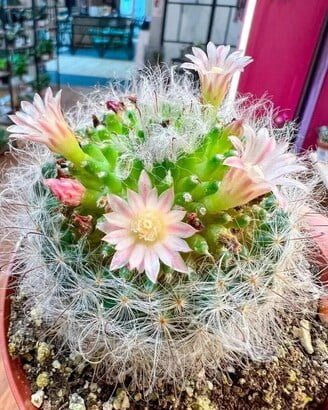
Mammillaria bocasana, the “Pincushion Cactus,” has a soft, woolly appearance with small, white flowers. Native to Mexico, it grows in clusters, preferring bright light and well-draining soil. It needs watering similar to that of other Mammillaria species.
| Attribute | Details |
|---|---|
| Botanical Name | Mammillaria bocasana |
| Flower Colour | Cream Pink Shaded |
| Flowering Season(s) | Spring and summer |
| Sunlight Need | Bright, indirect sunlight |
| Soil Requirements | Loam, Sand |
Mammillaria Bombycina

Mammillaria bombycina, the “Cotton Ball Cactus,” has fluffy, white spines resembling cotton. It produces small, yellow flowers in spring and summer. It is easy to care for, needing bright light and infrequent watering.
| Attribute | Details |
|---|---|
| Botanical Name | Mammillaria bombycina |
| Flower Colour | Cream / Off-White, Pink |
| Flowering Season(s) | Summer Season |
| Sunlight Need | Full sun or bright direct light |
| Soil Requirements | Well-drained soil |
Mammillaria Elongata

Mammillaria elongata, the “Ladyfinger Cactus,” has elongated stems growing in clusters. It produces bright yellow flowers, thriving with moderate sunlight and careful watering to prevent root rot.
| Attribute | Details |
|---|---|
| Botanical Name | Mammillaria elongata |
| Flower Colour | White and Yellow |
| Flowering Season(s) | Spring and Summer Season |
| Sunlight Need | Bright direct sunlight |
| Soil Requirements | Loam and Sand |
Mammillaria Eriacantha
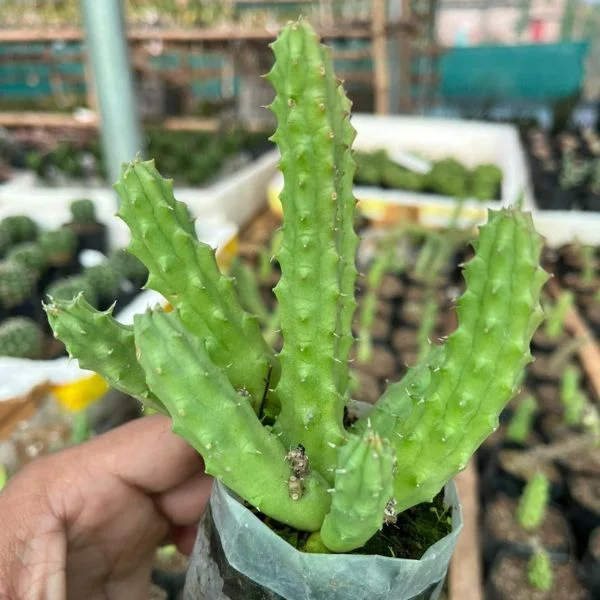
Mammillaria eriacantha, the “Old Lady Cactus,” has long, white hair and pink flowers. Native to Mexico, it can grow up to 12 inches tall, preferring bright, indirect sunlight and minimal watering.
| Attribute | Details |
|---|---|
| Botanical Name | Mammillaria Eriacantha |
| Flower Colour | White-green |
| Flowering Season(s) | Summer/Spring Season |
| Sunlight Need | Plenty of sunlight |
| Soil Requirements | Well-drained soil |
Mammillaria Pringlei

Mammillaria pringlei forms dense clusters with spines and vibrant pink flowers. It blossoms in well-drained soil and plenty of sunlight. It handles drought, making it ideal for arid gardens.
| Attribute | Details |
|---|---|
| Botanical Name | Mammillaria pringlei |
| Flower Colour | Deep Red, Pink, Magenta |
| Flowering Season(s) | Spring – Summer |
| Sunlight Need | Copious amounts of bright light |
| Soil Requirements | Well-aerated and fast-draining soil |
Mammillaria Prolifera
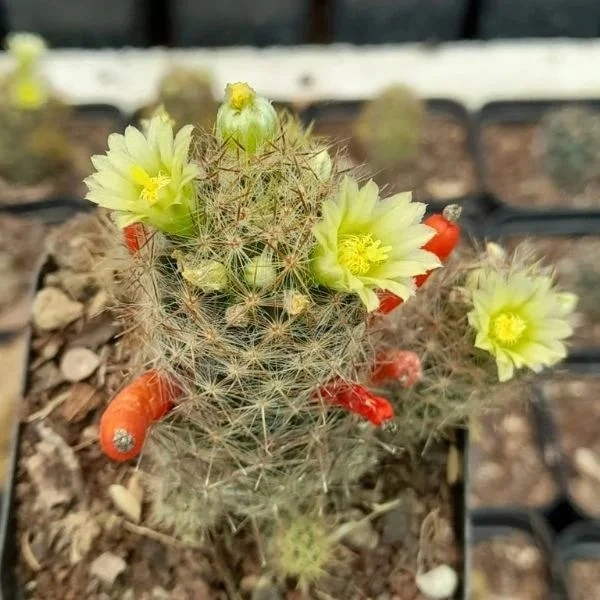
Mammillaria prolifera, the “Nipple Cactus,” is small and produces numerous offsets. It has pink to white flowers blooming in summer. It prefers bright light and should be watered sparingly, allowing the soil to dry out.
| Attribute | Details |
|---|---|
| Botanical Name | Mammillaria prolifera |
| Flower Colour | Yellow/Pink/Red |
| Flowering Season(s) | Summer Season |
| Sunlight Need | At least 6 hours of direct sunlight daily |
| Soil Requirements | Loam, Sand |
Mammillaria Prolifera – Black
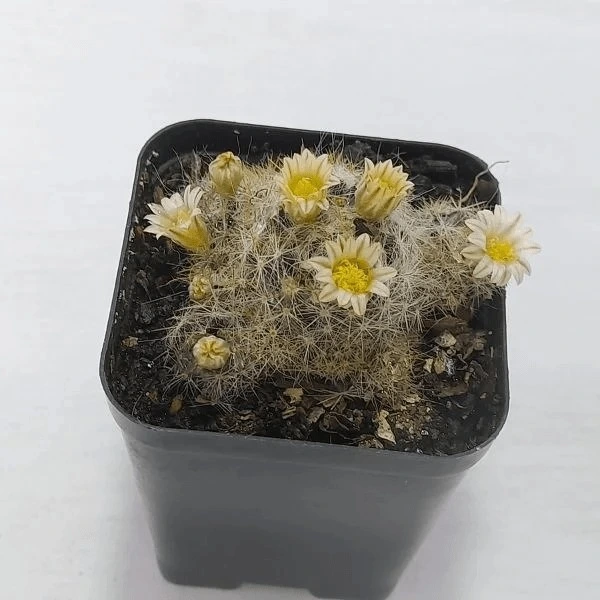
The black variant of Mammillaria prolifera has dark spines contrasting against its flowers. It produces small pink blooms, thriving in similar conditions to its counterpart. This unique coloration attracts collectors and enthusiasts.
| Attribute | Details |
|---|---|
| Botanical Name | Mammillaria Prolifera – Black |
| Flower Colour | Yellow, Creamy Tones, or White |
| Flowering Season(s) | Summer |
| Sunlight Need | Plenty of sunlight |
| Soil Requirements | Dry Soil |
Mammillaria Thimble
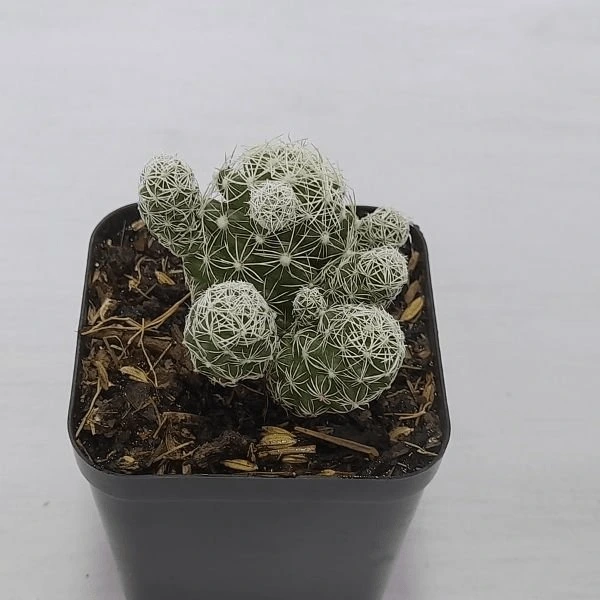
Mammillaria thimble, the “Thimble Cactus,” is small and globular with dense spines. It produces delicate pink flowers in clusters, enhancing its ornamental appeal. It requires bright light and minimal watering.
| Attribute | Details |
|---|---|
| Botanical Name | Mammillaria Thimble |
| Flower Colour | White, Yellow |
| Flowering Season(s) | Spring, Late Summer |
| Sunlight Need | Full sun or bright direct light |
| Soil Requirements | Fertile, gravel-rich, water-permeable soil with a pH of 6-7 |
Mammillaria Vetula
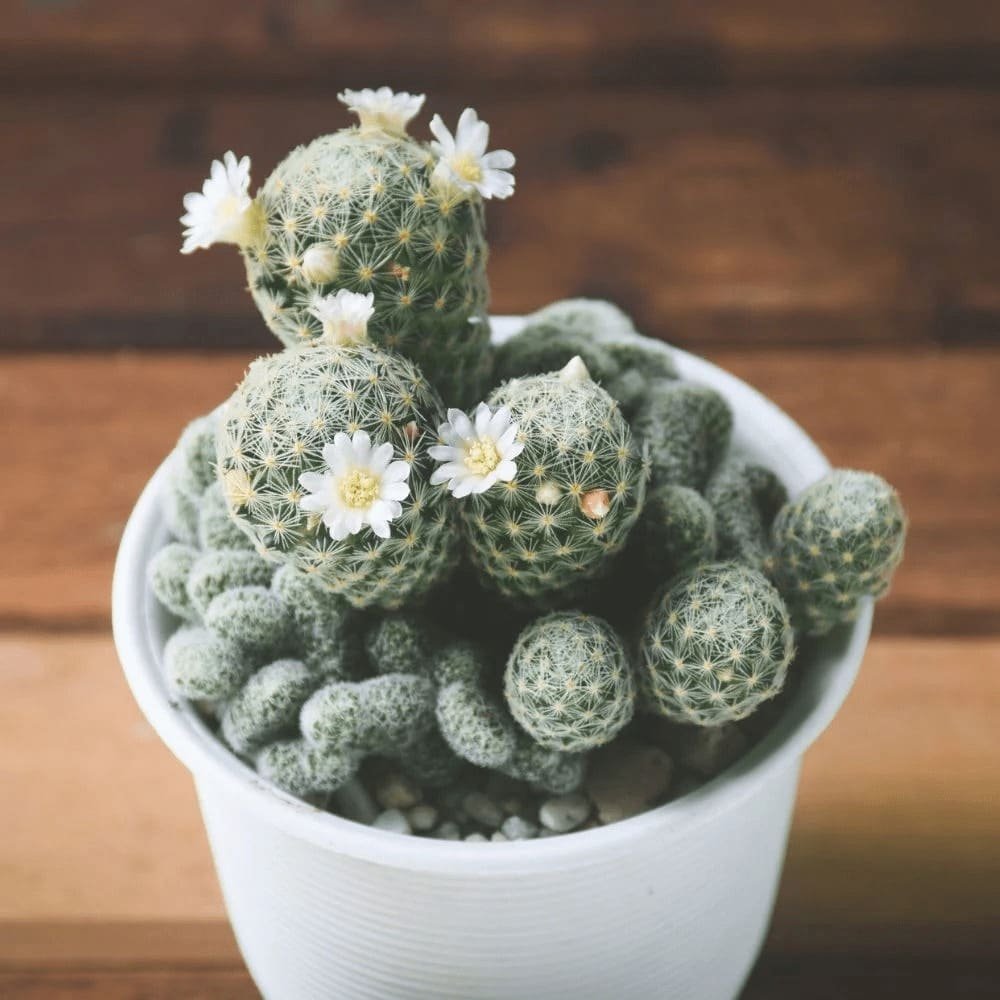
Mammillaria vetula is small and cylindrical, growing in clusters with numerous spines. It produces white to pale pink flowers, thriving in well-draining soil and bright light, suitable for indoor and outdoor cultivation.
| Attribute | Details |
|---|---|
| Botanical Name | Mammillaria Vetula |
| Flower Colour | Yellow / Golden |
| Flowering Season(s) | Summer Season |
| Sunlight Need | Indirect bright sunlight |
| Soil Requirements | Loam (Silt), and Shallow Rocky Soil |
Large Flowering Cactus Plants
Large flowering cactus plants like Hamatocactus setispinus, Gymnocalycium, and others are admired for their striking blooms and unique appearances. Hamatocactus setispinus, or the Hedgehog Cactus, produces large, fragrant yellow flowers with a red center.
Gymnocalycium species are known for their diverse, stunning flowers in various colors. The Indiana Head Cactus features a distinctive head-like structure with vibrant flowers, while the Noto White Cactus blooms profusely with striking white flowers.
The Thai Brain Cactus and Huernia species, including Huernia macrocarpa and Huernia zebrina variegata, are prized for their unique forms and beautiful, star-shaped flowers, thriving in bright light and well-draining soil. Find the list of large flowering cactus plants mentioned below:
Hamatocactus Setispinus
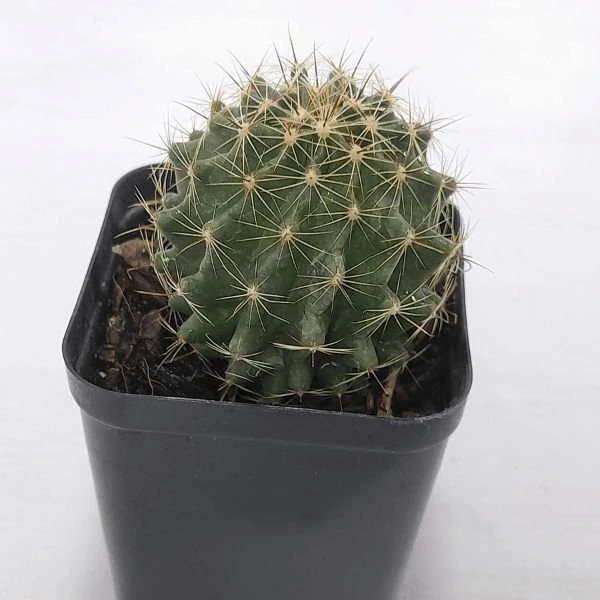
Hamatocactus setispinus, also known as the Hedgehog Cactus, is a solitary cactus native to southern Texas and northern Mexico. It features a rounded shape, with 12-15 ribs and a dense covering of yellowish-brown spines. This species produces large, fragrant yellow flowers with a red center during the summer and autumn, making it a striking addition to any collection.
| Attribute | Details |
|---|---|
| Botanical Name | Hamatocactus Setispinus |
| Flower Colour | Yellow flowers with a red center |
| Flowering Season(s) | Summer Season |
| Sunlight Need | Full sun throughout the year |
| Soil Requirements | Rich, well-drained soil |
Gymnocalycium
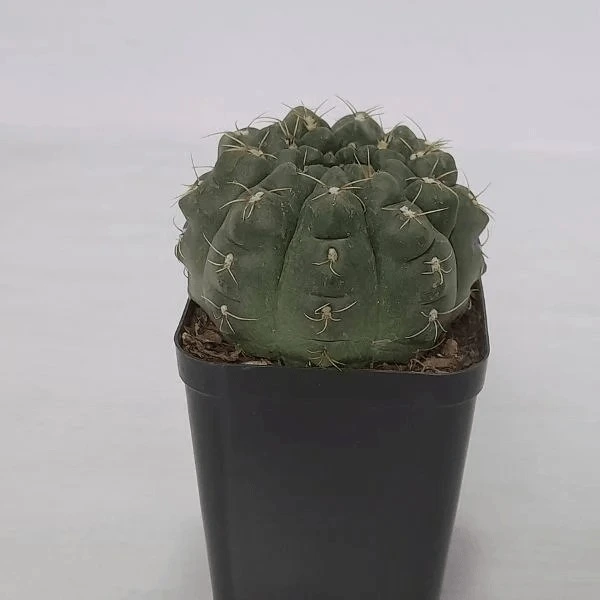
Gymnocalycium is a diverse genus of flowering cactus plant known for its small to medium size and stunning flowers that can vary in color from white to pink and red. These cacti are primarily found in South America and are characterized by their ribbed, rounded bodies and spines that are often minimal or absent. They thrive in well-draining soil and require bright light, making them popular among cactus enthusiasts.
| Attribute | Details |
|---|---|
| Botanical Name | Gymnocalycium |
| Flower Colour | Red/Pink/Orange |
| Flowering Season(s) | Summer Season |
| Sunlight Need | Ample sunlight |
| Soil Requirements | Potting mix with sand and fine pumice |
Indiana Head Cactus
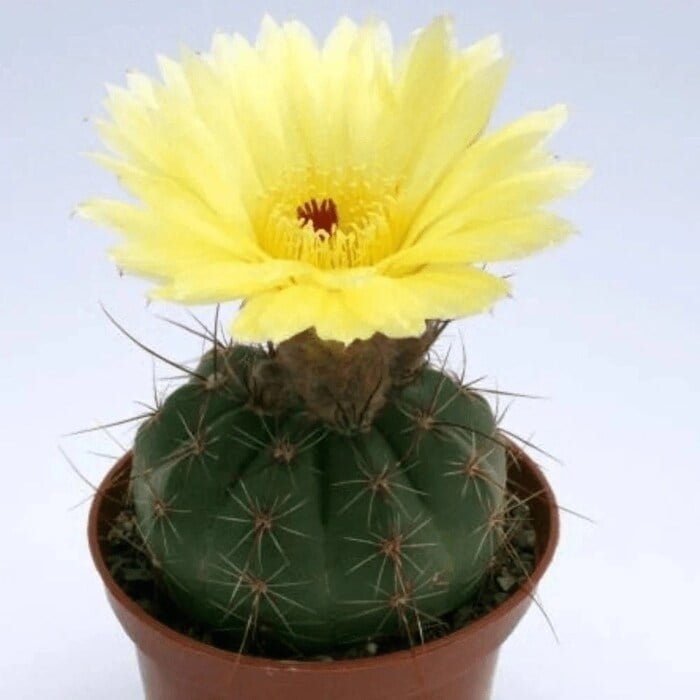
The Indiana Head Cactus, often referred to as the “Head Cactus,” is a unique species that features a distinctive head-like structure atop its body. This cactus produces vibrant flowers that can range in color, attracting pollinators and adding visual interest. It thrives in arid environments and prefers full sunlight, making it suitable for xeriscaping and rock gardens.
| Attribute | Details |
|---|---|
| Botanical Name | Indiana Head Cactus |
| Flower Colour | Sparkling Yellow |
| Flowering Season(s) | Spring/Summer |
| Sunlight Need | Plenty of sunlight |
| Soil Requirements | Loam Soil |
Noto White Cactus
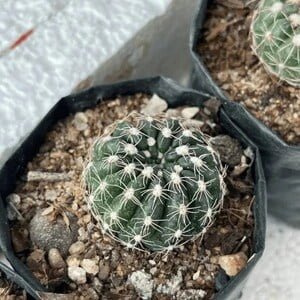
Noto white cactus is popular for its striking white flowers. It is one of the visually appealing flowering cactus plant that blooms profusely under the right conditions. This cactus typically has a cylindrical shape and can grow quite large, making it a standout in any garden. It requires well-draining soil and moderate watering, thriving in bright light to encourage its beautiful blooms.
| Attribute | Details |
|---|---|
| Botanical Name | Noto White Cactus |
| Flower Colour | Bright Pink |
| Flowering Season(s) | Summer/Spring |
| Sunlight Need | At least 6-8 hours of sunlight |
| Soil Requirements | Potting soil that drains well and doesn’t retain moisture |
Thai Brain Cactus
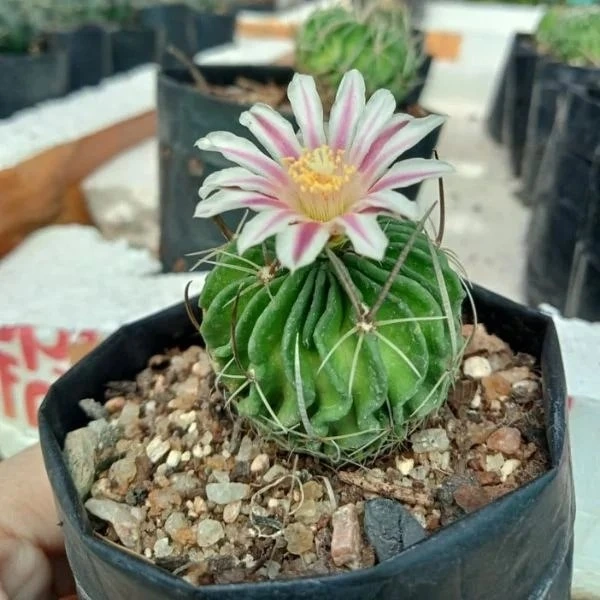
The Thai Brain Cactus, or Echinocactus grusonii, is popular for its unique, brain-like appearance and large, vibrant flowers. This flowering cactus plant can grow quite large, often reaching impressive sizes, and is popular for its ornamental value. It thrives in full sunlight and well-draining soil, requiring careful watering to prevent root rot.
| Attribute | Details |
|---|---|
| Botanical Name | Thai Brain Cactus |
| Flower Colour | Pink, Purple, or White |
| Flowering Season(s) | Spring Season |
| Sunlight Need | At least 6-8 hours of sunlight |
| Soil Requirements | Loam Soil |
Huernia Macrocarpa
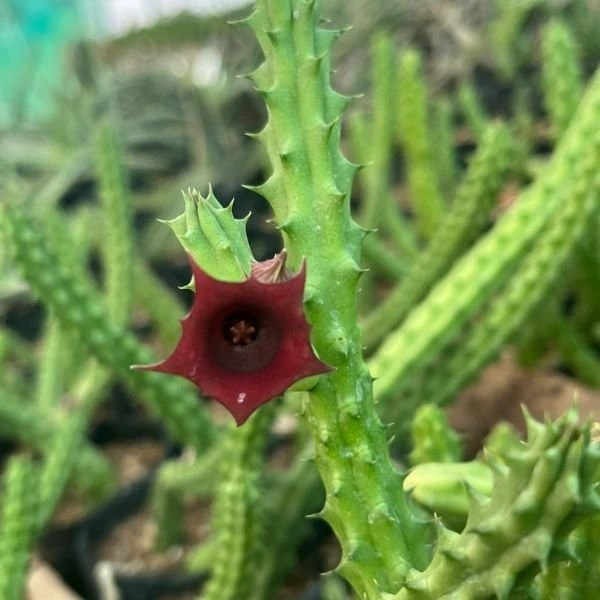
Huernia macrocarpa is a succulent that produces striking star-shaped flowers with a unique appearance, often resembling a starfish. This species is native to Africa and can grow quite large, making it an eye-catching addition to succulent collections. It thrives in well-draining soil and requires bright light, with minimal watering needs.
| Attribute | Details |
|---|---|
| Botanical Name | Huernia Macrocarpa |
| Flower Colour | Dark purple or dark pink with a white hairy coating |
| Flowering Season(s) | July to October |
| Sunlight Need | Brightly-lit spot, such as a south-facing window |
| Soil Requirements | Well-draining soil |
Huernia Zebrina – Variegata
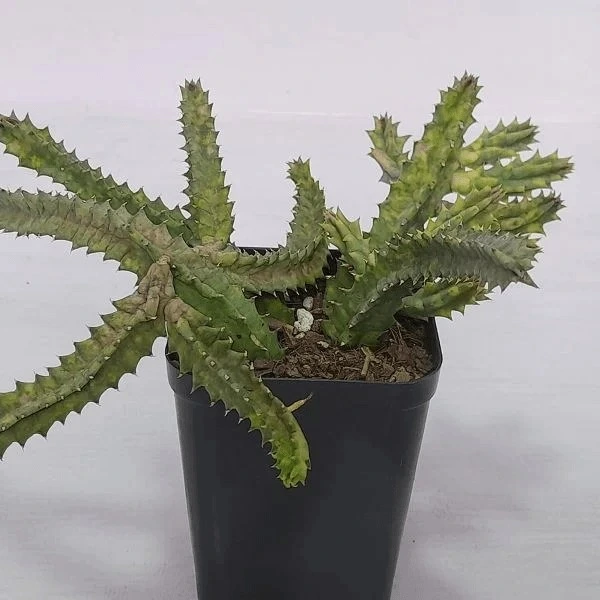
Huernia zebrina variegata is a striking succulent known for its distinctive zebra-like stripes and unique flowers that can vary in color. This variety has a more colorful and patterned appearance compared to its counterparts, making it a favorite among collectors. It thrives in bright light and requires minimal watering, making it a low-maintenance option for succulent enthusiasts.
| Attribute | Details |
|---|---|
| Botanical Name | Huernia Zebrina – Variegata |
| Flower Colour | Vibrant Orange and Yellow |
| Flowering Season(s) | Late Spring through Summer |
| Sunlight Need | Plenty of sunlight |
| Soil Requirements | Draining soil enriched with pumice, sand, or lapillus |
How to Care Flowering Cactus Plants to Ensure They Bloom?
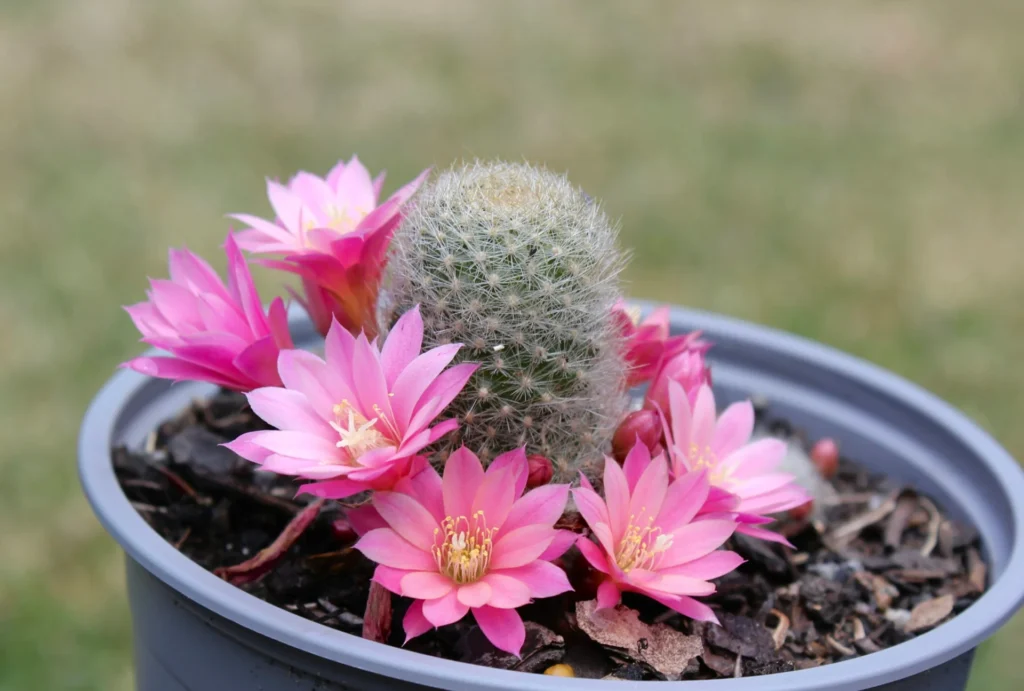
Here are the key steps to care for flowering cactus plants and encourage abundant blooms:
Provide Ample Sunlight
- Place cacti in a south or west-facing window to get 6-8 hours of direct sunlight per day
- During winter, keep them in the same spot if daylight hours decrease naturally
Maintain Ideal Temperatures
- 70-80°F during spring and summer for active growth
- Around 50°F in fall and winter to trigger dormancy and bud formation
Water Properly
- Allow soil to completely dry out between waterings
- Water thoroughly until it drains out the bottom, mimicking desert rainfall
- Reduce watering to just enough to prevent shriveling in winter dormancy
- Resume regular watering in spring and feed with a liquid cactus fertilizer
Provide Rest Period
- Cacti need a winter dormancy period to redirect energy from growth to flower bud production
- Keep plants cool (around 50°F) after blooming and withhold fertilizer
- Alternate between 10 hours of light and 14 hours of total darkness for 4-6 weeks after new growth appears to encourage blooming
Use Right Soil and Pot
- Plant in a well-draining cactus potting mix or make your own with sand, perlite, and regular potting soil
- Use a container with drainage holes to prevent overwatering and root rot
Be Patient
- Some cacti won’t bloom until they are several years old, even with ideal conditions
- Provide the correct care and allow the plant to rest in winter to maximize blooming potential
How Can I Prevent Pests From Damaging My Flowering Cactus Plants?

To prevent pests from damaging your flowering cactus, consider these strategies:
- Inspect Regularly: Regularly check your cacti for early signs of pests like aphids, mealybugs, or spider mites.
- Isolate New Plants: Quarantine new plants before adding them to your collection to prevent introducing pests.
- Proper Watering: Avoid overwatering, which can create a humid environment that attracts pests. Ensure the soil dries out between waterings.
- Clean the Area: Keep the area around your cactus clean and free of debris, which can harbor pests.
- Use Neem Oil: Apply neem oil or insecticidal soap as a natural pesticide to deter pests without harming the plant.
- Introduce Beneficial Insects: Consider introducing beneficial insects like ladybugs that prey on common cactus pests.
- Maintain Airflow: Ensure good air circulation around your cactus to prevent the buildup of moisture and discourage pests.
- Prune Affected Areas: If you notice pest infestations, prune and dispose of affected parts to prevent the spread.
- Use Diatomaceous Earth: Sprinkle food-grade diatomaceous earth around the base of the plant to create a barrier against crawling pests.
To Conclude
Transform your home into a vibrant, living gallery with these stunning flowering cactus plants. Whether you prefer the delicate beauty of Mammillaria species or the bold presence of large cacti like Hamatocactus and Gymnocalycium, these plants are sure to bring joy and elegance to any space.
The resilience and minimal maintenance of these cactus flower plants make them perfect for both novice and experienced gardeners. Start growing these captivating cacti today, and watch your home bloom with color and life. Don’t miss the chance to beautify your garden with these unique, easy-to-care plants! Buy your favorite one from Plantzone!
FAQs (Frequently Asked Questions)
What are some popular small flowering cactus plants?
Popular small flowering cactus plants include Mammillaria species like Mammillaria albilanata, Mammillaria bocasana, and Mammillaria bombycina, known for their vibrant blooms and compact forms.
How can I encourage my flowering cactus to bloom?
To encourage blooming, provide ample sunlight (6-8 hours daily), maintain ideal temperatures (70-80°F in spring/summer), and ensure proper watering with a winter rest period.
Can large flowering cactus plants be grown indoors?
Yes, large flowering cactus plants like Hamatocactus and Gymnocalycium can be grown indoors with proper care, including bright light, well-draining soil, and careful watering.
What type of soil is best for flowering cactus plants?
Flowering cactus plants grow in well-draining soil, often a mix of sand, perlite, and regular potting soil, to prevent root rot and overwatering.




